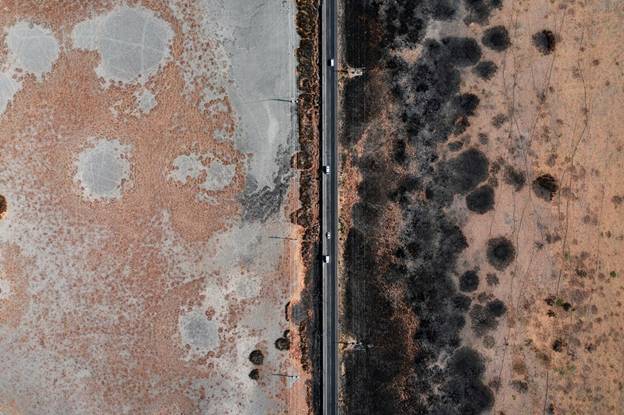Did you know that all it takes is one inch of water to wreak at least $25,000 worth of damage to your home? Unfortunately, many sources of indoor flooding can bring more than an inch of water to your home. These include plumbing pipes that burst while you’re away or flood-causing weather events.
Even worse is that mold growth can occur soon, sometimes within hours, after water damage. Once their spores land on a damp surface, they can begin reproducing.
And with over 100,000 types of molds known to exist, chances are, you have some inside your home. If allowed to colonize, they can damage your home and become a health hazard.
All that makes mold prevention after water damage crucial to your home and health.
Fortunately, you’ve come to the right place. We’ll teach you how to prevent mold, especially after mold damage, so keep reading.
Eliminate the Source of Moisture
Molds only need oxygen, organic materials, temperatures between 60 °F and 80 °F, and moisture to grow. Of all these factors, the last one is most vital to their survival.
Therefore, the key to preventing mold growth in your home is to remove sources of excess moisture.
Failed plumbing systems, such as leaky or burst pipes, are perfect examples. The folks at Advanced Plumbing Technology say water damage and mold are signs of such issues.
Another possible culprit is a leaky water heating storage tank.
In those cases, you must turn off your main water supply valve to stop them from flooding your home further.
You should then call a 24/7 plumbing contractor for help. You need them pronto because you won’t be able to use water with the main valve closed shut. Do the same if the source is a plumbing drain that backs up wastewater.
Aside from faulty plumbing, leaking roofs can also be moisture sources. So are defective gutters that allow water to seep into your home’s foundation. An HVAC system that drips water can also contribute to indoor dampness that helps molds grow.
Get those problems fixed by repair contractors as soon as possible. You must address them since they’re the root cause of the water damage or mold. If you don’t, molds will return since moisture is still present.
Get the Water Out
Since molds can grow within one to two days, you must remove as much water or wet materials as you can before they do.
If the source of the water damage is clean (e.g., a burst water supply pipe), you can mop it up or use a wet/dry shop vacuum. However, regardless of the color of the water, use a face mask, goggles, rubber gloves, and boots before you wade in it.
If the water came from outside or a backed-up drain, it may be best to hire water damage specialists. A good enough reason is that floodwaters may contain sewage, feces, and chemicals. Exposure to them can cause infectious diseases.
Dry or Remove Wet Materials
Once you’ve removed as much water as possible, inspect everything it has had contact with. These include floors, walls, furnishings, carpeting, and toys, to name a few.
If the items are washable, thoroughly clean, sanitize, and dry them. These include non-porous and semi-porous objects like walls, floors, and furniture.
You can still wash porous objects, including upholstery, drapes, carpets, and rugs. However, you may have to throw carpets exposed to wastewater or flood water.
Turn Your HVAC System On
Provided it’s safe, switch your heating, ventilation, and air conditioning system on. This can help remove moisture in the air as you clean and dry your home out. The less damp your indoor air is, the lower the risk of molds growing.
Use Natural Ventilation if Possible
Natural ventilation involves taking advantage of outdoor air to push out indoor air. The goal here is to replace moist indoor air with dry outdoor air. You can do this by simply opening your doors and windows.
Before doing that, though, check your weather forecast for the day. If it says your area has low relative humidity (usually 40% RH), the air is dryer. In this case, it’s okay to use natural ventilation to help control your moist indoor air.
Use a Dehumidifier
Keep your doors and windows closed if the air outside is just as or even more moist than your home’s. You should also avoid natural ventilation if your area is prone to outdoor air pollution.
In those circumstances, you can use a dehumidifier instead.
A dehumidifier is a machine that extracts water vapor from the air. Once it sucks the moisture out, it expels drier air back into the space.
You can also pair your dehumidifier with one or two fans. This helps circulate the air and drive it into the humidifier. That can then reduce the odds of the air getting stuck and stale.
Monitor Your Indoor Relative Humidity
Experts say indoor RH levels exceeding 70% to 80% are favorable conditions for mold growth. This is also why you must keep your home’s RH level below that range, ideally not more than 60%.
So, regularly test your RH level after cleaning up and drying your water-damaged home. You can do this with a hygrometer, also called a moisture meter, which measures the humidity in the air. Use it to gauge if your home’s RH level is spiking in favor of mold growth.
You can buy a hygrometer at most hardware and home improvement stores.
Stop Mold Growth at Its Tracks
Remember: Mold growth is mainly dependent on moisture. Thus, the best way to prevent molds after water damage is to eliminate the water source and dry the damaged area. Ventilate and dehumidify as much as possible, and don’t forget to monitor your indoor RH, too.
If you follow all those tips, you can reduce the odds of molds overtaking your home.
For more practical home tips and tricks like this, check out our recent lifestyle news and blog posts!










